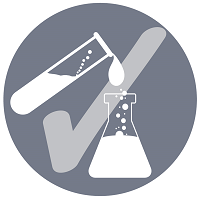Formulation and Delivery
Rapid Fires: Patient-Centric Formulation and Personalized Drug Delivery Strategies 2
Innovative Imaging Techniques Unraveling Needle Clogging Mechanisms in Pre-Filled Syringes
Monday, November 10, 2025
3:00 PM - 3:15 PM CT
Location: Stars at Night B2/B3

Pei-Yuan Hsiao, PhD
Sr. Scientist
Merck
Edison, New Jersey
Rapid Fire Speaker(s)
Needle clogging in staked-in-needle pre-filled syringes (PFSs) poses significant challenges in drug delivery, particularly with high-concentration formulations. This presentation explores the underlying mechanisms of needle clogging through advanced imaging techniques, including neutron imaging and synchrotron-based X-ray tomography. Our research investigates the dynamics of liquid movement within the needle region, revealing that temperature and pressure cycling significantly influence liquid presence. Additionally, we examine the migration of zinc ions from the rigid needle shield into the drug formulation, particularly under elevated temperatures. Using synchrotron-based X-ray fluorescence and mass spectrometry, we demonstrate that zinc leaching correlates with increased viscosity and gelation of monoclonal antibodies, contributing to clogging risks. The integration of these innovative imaging methods provides a comprehensive understanding of the microstructural arrangements within the needle and highlights the critical role of chemical interactions between the drug product and syringe components.
Learning Objectives:
- The session will present novel strategies and tools to address challenges such as high-viscosity formulations, device-related stress factors, and protein aggregation in biologic-device combination products.
- Interpret how temperature and pressure cycling influence liquid presence and movement in the needle and how these dynamics relate to clogging risk.
- Summarize evidence of zinc migration from rigid needle shields into drug formulations and identify analytical methods (X‑ray fluorescence, mass spectrometry) used to detect and quantify metal leaching.
- Evaluate how integration of imaging and chemical analysis can inform syringe component selection and handling/storage conditions to mitigate clogging in biologic‑device combination products.


